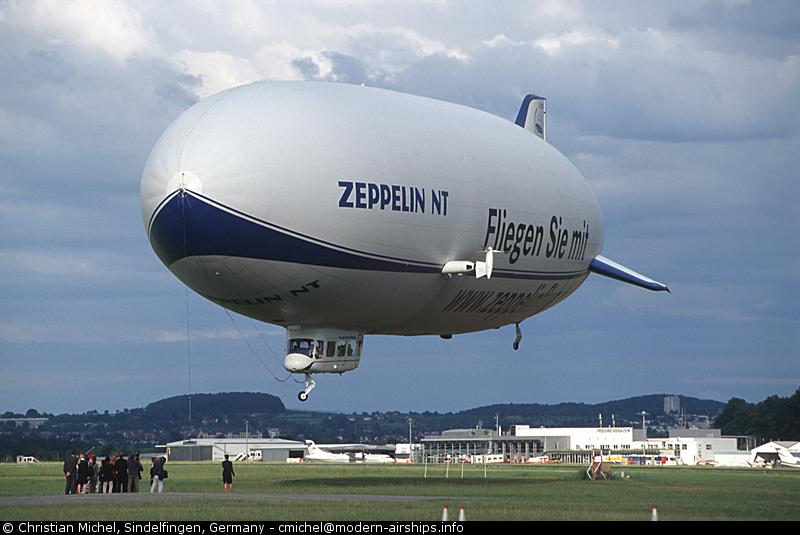A volcano in Iceland, which last erupted for fourteen months straight and bears the utterly unpronounceable name Eyjafjallajokull, has begun erupting again, and scattered ash over most of Europe. Because this volcano’s ash contains a high silica compound, if it gets in to an airplane’s engine intake, the silicon will melt and cause the engine parts to seize up, causing what airlines clinically call “major asset loss.”
On NPR today, I heard an interview with a guy in Oslo who needed to travel to London, and he was trying to figure out how to take a train from Oslo to Stockholm to Copenhagen to Brussels to London and figured that he could get there in about thirty hours. Getting back home, well, he hadn’t figured that out yet.
 So The Wife and I got to talking about what a realistic alternative might be, given that airplanes are, for the time being, simply not safe to fly in Europe. “Airships,” was her answer, and I thought, “Yeah, that’s right!” I thought I had heard that modern airships can sustain ground-speed equivalents of about 60 mph, but a little research shows at least one claim that the Hindenburg got up to 100 mph when it had a tail wind.
So The Wife and I got to talking about what a realistic alternative might be, given that airplanes are, for the time being, simply not safe to fly in Europe. “Airships,” was her answer, and I thought, “Yeah, that’s right!” I thought I had heard that modern airships can sustain ground-speed equivalents of about 60 mph, but a little research shows at least one claim that the Hindenburg got up to 100 mph when it had a tail wind.
A blimp is an airship without a rigid structure to its bag and relies on pressure differentials with the outside atmosphere to keep the shape of the bag in place. A “blimp” is usually contrasted with a “zeppelin,” which is actually a name for the product of a manufacturer, Zeppelin Luftschifftechnik of Friedrichshafen, Germany, which makes rigid-framed dirigibles. It resumed commercial passenger flight (for sightseeing, mainly) on August 15, 2001 in Germany, Switzerland, and Japan. The Zeppelin NT advertises an operational range of 900 kilometers and a top sustainable speed of 125 kilometers per hour, or 485 miles at 78 mph — and it seats twelve passengers.
So for the guy trying to get from Oslo to London, alas, current airship technology won’t do. But it can be done — the Graf Zeppelin circumnavigated the globe, with stops along the way in major cities. The direct route is about 780 miles, or more than half again the Zeppelin NT’s range, and with only twelve passengers on board, the trip would be prohibitively expensive. Still, ten hours in an airship would be better than thirty hours on a train, if those twenty hours are valuable enough to be worth purchasing.